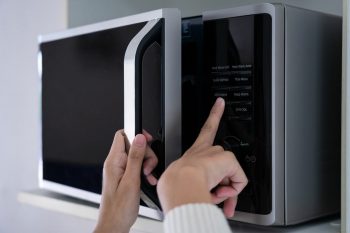
Rust in your hot water heater can be a nuisance, leading to discolored water, unpleasant odors, and a reduced lifespan for your heater. However, by following a few simple steps, you can clean rust out of your water heater and ensure it operates efficiently for years to come. In this comprehensive guide, we will walk you through this process step-by-step, and provide tips on how to prevent rust in the future.
To clean rust out of a hot water heater, first turn off the power supply and drain the tank. Flush the tank with cold water to remove sediment. Remove the drain valve and use a long, narrow brush to clean out the rust from the bottom of the tank, vacuuming up the rust with a wet/dry vacuum. Inspect and replace the anode rod if necessary, then flush the tank again. Close the drain valve and restore power. Prevent future rust by regularly maintaining your water heater, inspecting and replacing the anode rod, draining and flushing the tank annually, monitoring water pressure, and considering the installation of a water softener or filtration system.
Signs of Rust in Your Hot Water Heater
The first step is to identify whether your hot water heater has rust. Some early signs of rust include:
- Water discoloration and smell: If your hot water starts to develop a smell or takes on a brown color, you might have an issue with internal rust.
- A missing or significantly rusted anode rod: The anode rod, usually made of aluminum or magnesium, helps prevent rusting inside the tank. If it’s missing or heavily rusted, your tank is likely rusting.
- Metallic tasting water: If your water has a metallic taste, it signals that your water heater contains rust inside it.
- Water heater leaks: Leaks can be a sign of major damage to your water heater caused by internal rust.
Tools and Materials Needed
To effectively clean rust out of a hot water heater, you will need:
- A long, narrow brush
- A wet/dry vacuum
- A water heater cleaning tool, such as the Turbo Tank Cleaner
- A replacement anode rod
Step-by-Step Cleaning Process
- Turn off the power supply: For electric heaters, turn off the power from the breaker box. For gas heaters, set the heater to pilot mode and shut off the gas supply.
- Drain the tank: Attach a hose to the drain valve and run it to a sink or outside. Open a hot water faucet in the house to let air in. Open the drain valve and let all the water drain.
- Flush the tank: Fill the tank with about 5 gallons of cold water and drain it out to flush out some of the sediment.
- Remove the drain valve: Unscrew and remove the drain valve with a wrench to gain access to the bottom of the tank.
- Brush and vacuum the rust: Use a long, narrow brush to clean out the rust from the bottom of the tank. Vacuum the rust with a wet/dry vacuum.
- Inspect and replace the anode rod: Check the anode rod and replace it if necessary.
- Flush the tank again: Flush the tank one more time to ensure all rust and sediment are removed.
- Close the drain valve and restore power: Close the drain valve, reconnect the water inlet pipe, and turn the power supply back on.
Preventing Rust in the Future
After cleaning the rust out of your hot water heater, you’ll want to prevent it from forming again in the future. Here are some steps you can take:
- Regular maintenance: Schedule annual inspections and maintenance for your water heater to ensure it is functioning properly and to identify any potential issues early on.
- Inspect and replace the anode rod: The anode rod is a crucial component that helps prevent rust by attracting corrosive elements in the water. Check the anode rod at least once a year and replace it if it’s less than ½ inch thick or coated with calcium.
- Drain and flush the tank: Drain your water heater tank at least once per year to remove sediment and minerals that can cause corrosion and reduce its capacity.
- Monitor water pressure: High water pressure can cause stress on the water heater’s tank and fittings, leading to leaks over time. Install a pressure regulator to maintain consistent water pressure and prevent excessive strain on the hot water heater.
- Install a water softener or filtration system: If your home has hard water, a water softening or filtration system can help reduce sediment and mineral buildup, preventing rust and leaks.
By following these steps, you can effectively clean rust out of your hot water heater and improve its performance. Regular maintenance, such as draining and flushing the tank, can help prevent rust buildup from recurring.
Frequently Asked Questions
What is an anode rod and why is it important?
An anode rod is a steel core wire surrounded with one of three different metals: aluminum, magnesium, or zinc. The rod is screwed into the top of your water heater and protects your water heater from rusting. When water is heated, it produces corrosive elements. These elements attack the anode rod instead of the water heater because the metal of the anode rod is “sacrificed” before the tank itself.
How often should I replace the anode rod?
The lifespan of an anode rod typically ranges between 3 and 5 years, but this depends on the quality of your water. It’s recommended to check the anode rod annually. If it’s less than ½ inch thick or coated with calcium, it needs to be replaced.
What is the function of a water softener or filtration system in preventing rust?
A water softener or filtration system removes minerals from your water supply. These minerals can cause sediment buildup inside your water heater, which leads to corrosion and rust over time. By removing these minerals, a water softener or filtration system helps prolong the life of your water heater.
What is the ideal water pressure for my hot water heater?
The ideal water pressure for a residential water heater is between 50 and 60 PSI (pounds per square inch). If your water pressure exceeds 80 PSI, it could cause stress on your water heater and its fittings, leading to leaks over time.
How often should I drain and flush my hot water heater?
It’s recommended to drain and flush your hot water heater at least once a year. This removes sediment and minerals that can cause corrosion and reduce the water heater’s capacity. If your water is particularly hard, you might need to do this more often.












